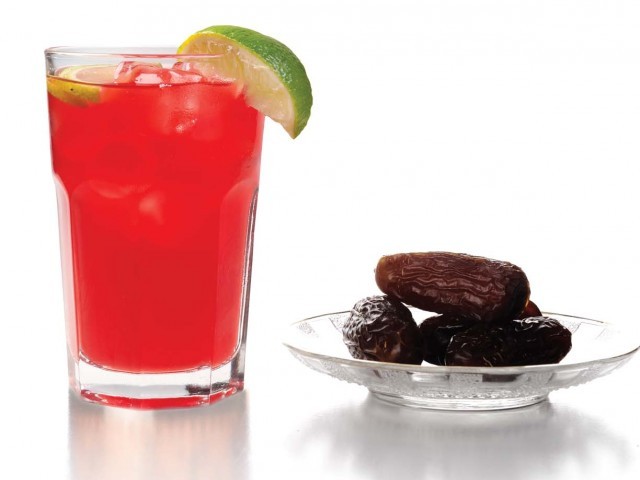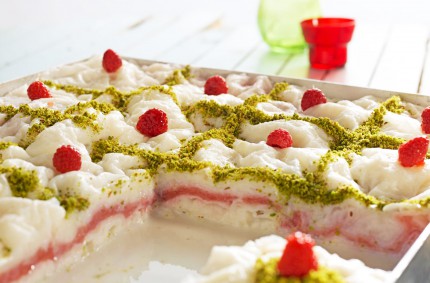The Islamic month of Ramadan is currently in full swing. From dusk until dawn, fasting Muslims abstain from eating, drinking (nope, not even water), smoking. As a result, breakfast and dinner during Ramadan is a sight to behold.
Here are few beloved delicacies eaten by some Muslims around the globe at their Ramadan evening meal, commonly known as iftar:.
Kolak (Indonesia)

In Indonesia, the country with the largest Muslim population, iftar is called buka puasa, which means “to open the fast.” A buaka puasa favorite is a dessert called kolak, consisting of palm or coconut sugar, coconut milk, and pandanus leaf. Served warm, kolak may also contain other ingredients such as bananas, sweet potatoes, tapioca balls, plantains, and pumpkin.
3. Rooh Afza (Pakistan)

4. Güllaç (Turkey)

Güllaç is a popular Ramadan dessert in Turkey. Made of a special pastry, milk, pomegranate, and walnuts, güllaç is considered the origin of the world-renowned baklava. Its name means “food with roses”, and while the dish can contain rose syrup, it is a reference to how the layers of the dish look like rose leaves.
5. Harira (Morroco)

Moroccan and Algerian Muslims traditionally break their fast with harira, a soup meant to prepare the empty stomach for a bigger dinner. Its ingredients consist of lentils, chickpeas, flour, tomatoes, onions, rice, and usually some sort of meat stock. Variations of harira exist depending on the region, such as Rabati, Fesi, and Marrakechi.
6. Shahan ful (Egypt)

Shahan ful, or ful, is a popular food in Egypt, Sudan, Ethiopia, Eritrea, and other parts of the Horn of Africa. A breakfast food, shahan ful is more often eaten for the morning Ramadan meal, known as suhoor. Fava beans are slowly cooked in water before being made into a paste that is served with bread and various vegetables such as hot green peppers, onions, and tomatoes. Shahan ful is also sometimes eaten with yogurt or feta cheese.
8. Bean pie (America)

Like Islam in America itself, the bean pie’s roots lie in the black Muslim community. In the words of Imam Johari Abdul-Malik of the D.C. area’s Dar Al-Hijrah Islamic Center: “If you have never had bean pie, you have not had an authentic American-Muslim experience.” Bean pie is a dessert similar to sweet potato pie, with a filling made from navy beans, butter, milk, eggs, sugar, and spices such as cinnamon, vanilla, and nutmeg. The origin of the bean pie has been attributed to Lonnie Shabazz, sister of the controversial Elijah Muhammad, who encouraged his Nation of Islam followers to eat healthier in his book How to Eat to Live. However, it is a popular Ramadan treat among all black Muslims in the D.C. area.
With 1.8 billion Muslims on the planet, these dishes are just a drop in the bucket of a wide variety of Ramadan culinary tradition. If you’re fasting and, therefore, salivating over these photos, why not try out a recipe from another country for iftar? While traditions are one of the things we look forward to the most on holidays, it doesn’t hurt to try out someone else’s. Your taste buds will thank you.
